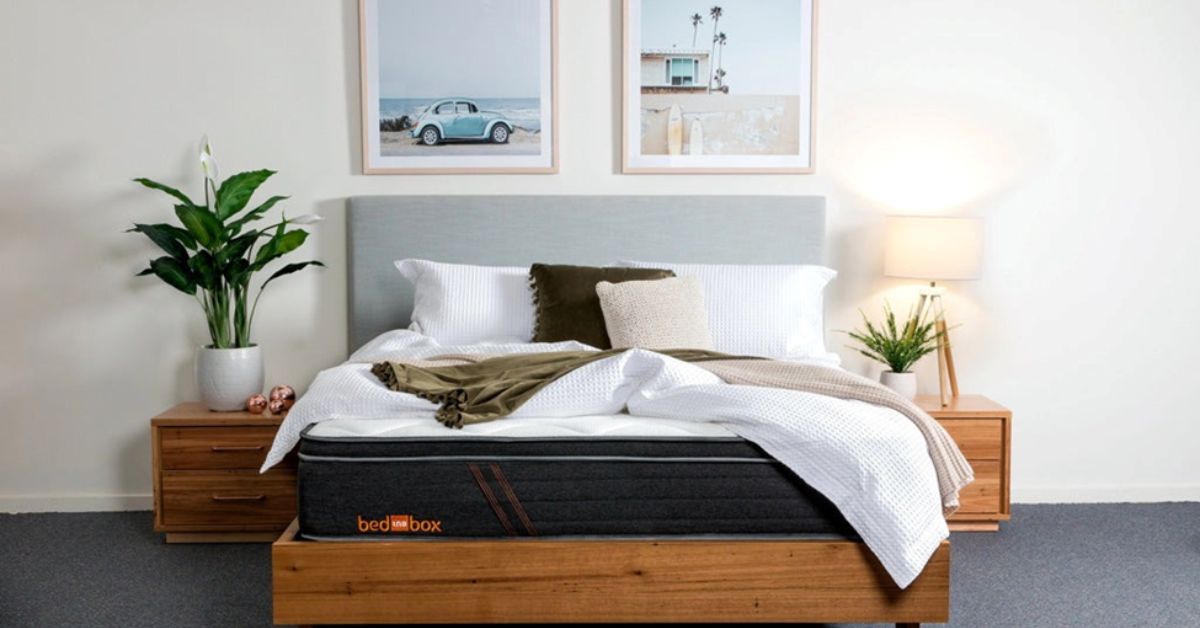Every parent understands the non-negotiable importance of a good night’s sleep. We see its effects in our children’s bright eyes, boundless energy, and cheerful moods. Yet, what often goes overlooked is the silent, foundational partner in this nightly ritual: the mattress. Choosing the right kids’ mattress is far more than a simple purchase; it is a critical investment in your child’s physical health, cognitive development, and overall well-being. With a dizzying array of options, materials, and marketing claims, navigating this decision can feel overwhelming. This comprehensive guide will demystify the process, empowering you to make an informed, confident choice that ensures your child gets the restorative sleep they need to thrive.
Why the Right Mattress is a Cornerstone of Childhood Health
Children are not merely small adults; they are dynamic beings in a constant state of growth and development. During sleep, their bodies release growth hormones, their brains consolidate memories and learning, and their immune systems recharge. A subpar mattress can actively undermine these vital processes.
- Spinal Alignment and Postural Development: A child’s skeletal system is pliable and still forming. A mattress that is too soft allows the body to sink into an unnatural, hammock-like position, misaligning the spine and straining developing muscles. Conversely, a mattress that is too firm won’t contour to the body’s natural curves, creating pressure points at the shoulders and hips and leading to discomfort and restless tossing. The ideal mattress provides even, head-to-toe support, maintaining a neutral spinal alignment from head to toe.
- Cognitive and Behavioral Benefits: The link between sleep quality and cognitive performance is well-documented. Disrupted or poor-quality sleep, often caused by an uncomfortable mattress, can lead to difficulties with concentration, memory retention, and emotional regulation in school-aged children. A supportive mattress promotes uninterrupted deep sleep cycles, helping your child wake up refreshed, focused, and ready to learn.
- Allergy and Health Protection: Children, especially younger ones, have more sensitive respiratory systems. Many conventional mattresses are made with synthetic foams, adhesives, and flame retardants that can off-gas volatile organic compounds (VOCs). These chemicals can exacerbate allergies and asthma. Opting for a mattress with certified organic or hypoallergenic materials creates a safer, cleaner sleep environment.
A Detailed Look at Key Factors in Your Mattress Decision
Making the right choice requires a careful evaluation of several interconnected factors. Consider this your checklist for mattress shopping.
1. The Goldilocks Principle: Finding the Perfect Support and Firmness
The goal is a mattress that is neither too soft nor too firm, but “just right.” However, “just right” has a scientific basis: optimal support.
- For Infants and Toddlers: Safety is paramount. A firm sleep surface is universally recommended to reduce the risk of Sudden Infant Death Syndrome (SIDS). It prevents the baby from sinking in, which could impede breathing.
- For School-Aged Children and Teens: As children grow and their weight distributes, they need a mattress that offers a balance of support and pressure relief. When testing a mattress (or having your child test it), observe if their spine remains in a natural, straight line. There should be no gap under the lower back, and their shoulders and hips should be gently cradled without sinking dramatically.
2. The Material Makeup: Understanding Comfort Layers and Cores
The materials inside the mattress determine its feel, support, and durability.
- Memory Foam: Known for its excellent pressure relief and body-contouring properties. It minimizes motion transfer, which is a boon for siblings sharing a bed. Look for “open-cell” or “gel-infused” memory foam, which are more breathable and mitigate the traditional heat retention of older memory foam designs.
- Innerspring (Coil): These mattresses are known for their strong support and significant airflow, keeping sleepers cool. The quality is determined by the coil count and gauge (thickness). A higher coil count with a pocketed coil system (where coils move independently) often provides better contouring and less motion transfer than a traditional Bonnell coil system.
- Latex: Often considered a premium option, latex is naturally supportive, durable, and hypoallergenic. It provides a buoyant, “on top of the mattress” feel rather than the “sinking in” sensation of memory foam. Natural latex is derived from rubber trees and is an excellent eco-friendly choice.
- Hybrid: Combining the best of both worlds, hybrid mattresses feature a supportive coil core with layers of foam or latex on top. This design aims to provide the contouring comfort of foam with the responsive support and cooling airflow of coils.
3. Prioritizing Health and Safety: The Case for Organic and Non-Toxic Materials
Given that children spend up to 12 hours a day in close contact with their mattress, the materials it’s made from matter immensely.
- Look for Certifications: Don’t just trust marketing terms like “natural.” Look for independent, rigorous certifications:
- Global Organic Textile Standard (GOTS): Certifies the organic status of the textiles (e.g., cotton cover).
- Global Organic Latex Standard (GOLS): Certifies the organic status of latex.
- GREENGUARD Gold: This is the most stringent certification for low chemical emissions, ensuring the mattress contributes to healthy indoor air quality.
- Natural Materials: Organic cotton, wool, and latex are the holy trinity of healthy sleep. Wool is a natural fire barrier, eliminating the need for chemical flame retardants. It is also moisture-wicking and temperature-regulating.
4. Investing in the Long Haul: Durability and Longevity
A quality kids’ mattress should be a long-term investment, ideally lasting through several growth stages. Durability is directly tied to material quality and construction.
- High-Density Foams: In memory foam mattresses, the density of the foam (measured in pounds per cubic foot, or PCF) is a key indicator of durability. Higher-density foams resist sagging and indentations far better than low-density, budget alternatives.
- Coil Quality: In innerspring and hybrid models, look for tempered steel coils and reinforced edges. A high coil count and a robust edge support system prevent the mattress from breaking down prematurely.
- Warranty: A longer warranty period (e.g., 10 years) often reflects the manufacturer’s confidence in the product’s longevity. Be sure to read the fine print on what is covered.
5. Sizing Up the Situation: Choosing the Right Mattress Size
The right size balances your child’s comfort with the room’s dimensions and your family’s needs.
- Crib Mattress: The standard is 28″ x 52″. Ensure a snug fit in the crib—there should be no more than a two-finger gap between the mattress and the crib wall.
- Twin/Twin XL: The twin (38″ x 75″) is the most common choice for a child’s first “big kid bed.” It provides ample space without dominating the room. The Twin XL (38″ x 80″) offers extra length, perfect for taller children and teenagers.
- Full/Double: A full mattress (54″ x 75″) offers more width, which is ideal if a child tends to move around a lot, if a parent often joins for bedtime stories, or if you want a bed that will last through the teen years.
6. Maintaining the Perfect Climate: Sleep Temperature Regulation
Some children are naturally hot sleepers, and a stuffy mattress can lead to frequent wake-ups. Temperature regulation is a function of airflow.
- Cooling Features: Look for mattresses with gel-infused foams, breathable latex, or innerspring/hybrid designs that promote air circulation.
- Natural Fibers: A cover made of organic cotton or wool is naturally breathable and moisture-wicking, pulling heat and humidity away from the body to maintain a comfortable sleep temperature throughout the night.
The Foundation for a Healthy Future
Selecting the perfect kids’ mattress is a thoughtful process that intertwines the science of ergonomics with the principles of health and safety. It requires looking beyond the surface to understand the materials, construction, and design philosophy that will support your child night after night. By prioritizing proper support, non-toxic and durable materials, and the correct size, you are doing far more than just buying a piece of furniture. You are providing the foundation for countless nights of peaceful, restorative sleep. You are investing in the quiet, essential fuel that powers your child’s growth, learning, and happiness, ensuring they wake up each morning ready to embrace the day ahead.
ALSO READ: How To Incorporate A Marble Bathtub Into Your Modern Bathroom Design

